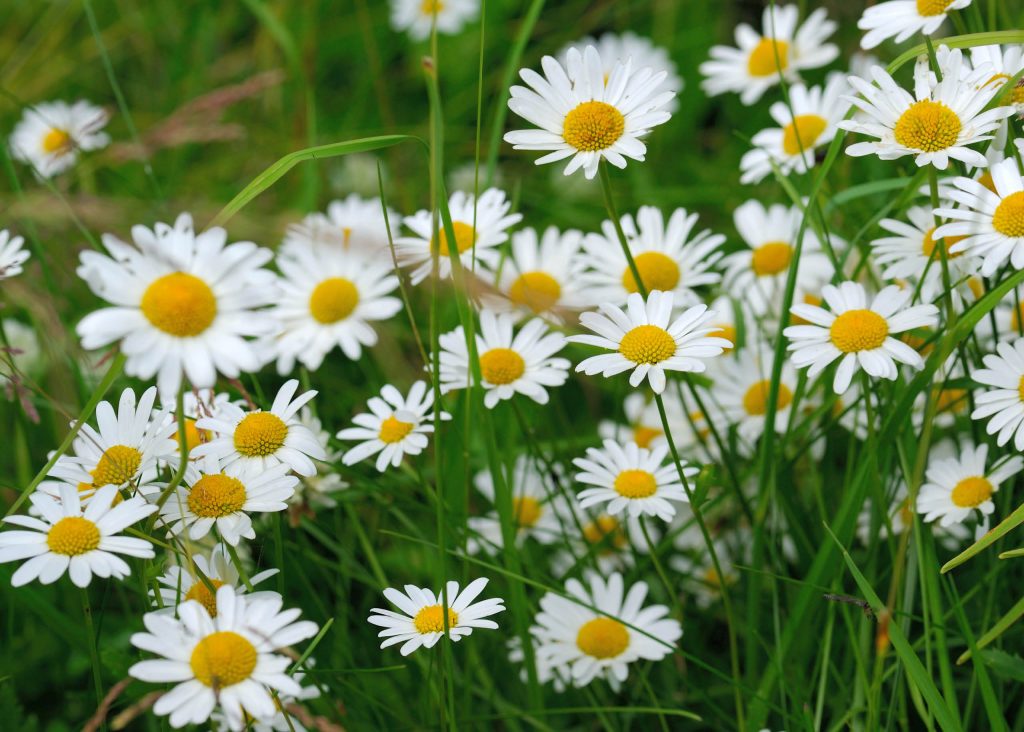What are Perennial Weeds?
Perennial Weeds are longer lived plants that can survive winter or regrow from roots, rhizomes or tubers in spring after a period of dormancy. Many weeds that grow from seed ...

 Daisies can be a beautiful addition to a garden, but they can also be a nuisance when they make their way into the lawn. Known for spreading quickly, these wildflowers can cause problems for your grass as they compete for water and nutrients. The dense foliage can also make it difficult for new grass to grow.
Daisies can be a beautiful addition to a garden, but they can also be a nuisance when they make their way into the lawn. Known for spreading quickly, these wildflowers can cause problems for your grass as they compete for water and nutrients. The dense foliage can also make it difficult for new grass to grow.
 Lawn daisies – also known as common daisies or English daisies – are a common broadleaf weed found in lawns, flowerbeds and pathways. They spread quickly, making them a great groundcover in rockeries and garden beds, but not so desirable in lawns.
Lawn daisies – also known as common daisies or English daisies – are a common broadleaf weed found in lawns, flowerbeds and pathways. They spread quickly, making them a great groundcover in rockeries and garden beds, but not so desirable in lawns.
A hardy perennial plant, daisies can often be found growing in moist, fertile soils and in full sun or partial shade.
Daisies reproduce via short, thick rhizomes which produce new plants at nodes. They usually produce flowers during the spring and seeds can be wind-disseminated and give rise to new plants.
Daisies are one of the more attractive lawn weeds, however they do compete with lawn grass for water and nutrients. Once established, daisies can form dense mats of foliage, which can smother the grass, and impact lawn coverage. Daisy seeds are also easily disseminated by the wind, which means that they can find their way into unwanted locations, such as garden beds and between paving.
English daisy produces low-growing rosettes of spatula-shaped leaves ranging from 2-6 cm in length. Leaves are rounded at the top and often have slightly serrated margins.
Daisy flowers are small – only 2-3 cm in diameter – with many white petals encircling a central cluster of yellow disk florets. These flowers are supported on a single stem, which can grow to 10cm in height.
If you have a problem with daisies on your lawn, there are several things you can do to get rid of them.
The most effective way to remove daisies is to dig them out by hand, using a variety of implements designed precisely for this job.
A daisy grubber is a traditional weed puller designed specifically to deal with short-rooted weeds. You slide the forked end into the soil, and lever the weed out, roots and all.
Similarly, you can use a hand fork to uproot the offending daisies.
Alternatively, a weeding knife has a thin, sharp angled blade designed to slide into between pavers to slice the weeds off at the root and drag out the weed for disposal.
Manual removal can be a tedious process, but if you have the time, it is an effective way to stop daisies from spreading.

Weed killers containing the active ingredient Dicamba are registered for use on daisies.
However, always check the label and only use weed killers that are registered for both the target weed (daisies) and your type of lawn variety.
 To prevent daisies from overtaking your lawn, focus on maintaining healthy soils – your grass will thank you for it.
To prevent daisies from overtaking your lawn, focus on maintaining healthy soils – your grass will thank you for it.
Soil compaction can occur in high traffic areas, where people or animals regularly walk on the lawn, such as the washing line, or the letterbox. Over time, the soil in these areas are deprived of air, water and nutrition, impacting the health of the immediate and surrounding grass, and creating the perfect environment for daisies to grow.
Aim to aerate and feed your lawns annually, encouraging healthy growth and vigour. You should also keep an eye on lawn thatch, which is the accumulation of dead plant material between the grass and the soil surface. Older lawns can accumulate large amounts of debris, which in turn impact lawn health.

Indigo ProForce Contra M 1L is a reliable, selective liquid herbicide used to control Broad Weeds containing 340 MCPA (340 g/L), Dicamba (80 g/L) as active ingredients, both present in the form of Dimethylamine salt. Best used with Wetter 600 for more effective results. Indigo ProForce Contra M CANNOT be used on Buffalo lawns but is suitable for use on Zoysia, Kikuyu and Couch grasses.
SHOP NOWDaisies may be pretty, but they can be a nuisance. When it comes to stopping daisies from invading your lawn, prevention is better than a cure. Focus on maintaining healthy soils though regular aeration and good nutrition, but if they do take hold, getting rid of daisies in your lawn is manageable with a bit of determination and a good selective weed killer.
For more information on leading herbicide treatments for your home lawn, visit myhomeTURF’s online store.